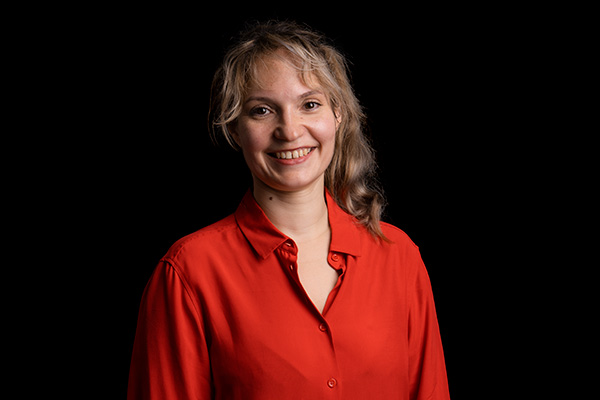Vida Engmann
Research leader

Project title
mayoPV: Designing intrinsically stable organic semiconductor ”mayonnaise” blends for high-performing organic solar cells
What is your project about?
We need new type of solar cells that can be installed everywhere. Organic solar cells are attractive - compared to other renewable energies, they have the lowest energy payback time and they emit the least CO2 per kWh. They are also transparent, flexible, light-weight, and made of low-cost and abundant materials and printing techniques, all readily available in Europe. In the recent years, their efficiencies skyrocketed – and reached over 19 %. This is possible due to a new type of molecules, the Non-fullerene-acceptors. But this new type of molecules introduce one major challenge. Due to their planar geometry, they ten to aggregate, causing the morphological rearrangements that reduce the efficiency of the solar cells over time. This happens in addition to the well-known photooxidation of molecules. In mayoPV I work on making organic solar cells more stable, by addressing these effects.
How did you become interested in your particular field of research?
As a child, I was always fascinated by libraries, with their old high-ceiling rooms with endless rows of books, each waiting to be opened so it can take you to a different exciting yet-unknown space – mathematical riddles, Japanese letters, chemical reactions, and Greek mythology were among the favorite ones. The interest in natural sciences continued over time, and eventually brought me to an internship at an organic photovoltaics laboratory where I fell in love with the unusual world of polymers. Ever since then, I always come across a new exciting question that I want to figure out, and that is why I stay in scientific research.
What are the scientific challenges and perspectives in your project?
Organic semiconductors, such as the ones in organic solar cells, are strong light absorbers. But the absorbed energy in these systems is rapidly lost – due to recombination. Therefore, to extract electrons and avoid recombination effects, we need to intermix the electron-rich donor and electron-poor acceptor molecules. However, this intermix is not stable over time. In my mayoPV project I am to find a way to make immiscible donors and acceptors miscible – through additives. This will extend significantly the lifetime of absorbed energy and solar cells. I will achieve this following the mayonnaise approach. Active layer blends are like mayonnaise: 2 main components, oil and egg are incompatible, and they need a compatibilizer (lecithin) in order to intermix. Following the same principle, I will create guidelines for mayoPV additives to extend the lifetime of the organic solar cells.
What is your estimate of the impact, which your project may have to society in the long term?
My mayoPV project will push forward the fields of organic photovoltaics and organic semiconductor based technologies in general, such as printed electronics that is expected to provide energy efficient components of the future and organic- based phtotocatalysis of water for green hydrogen. This project will thus contribute to a truly zero-emission society, using solely low environmental impact solutions, which is recognized as the grand societal challenge of our times. Within the project I also want to use the oportunity to reach out to the young generation of curious minds and “infect” them with interest in yet undiscovered world of organic semiconductors and materials science in general.
Which impact do you expect the Sapere Aude programme will have on your career as a researcher?
I feel honored that I am given a chance to investigate my research idea under this very prestigious fellowship. It will allow me to create a team of curious early-stage scientists with different backgrounds, who will together with me bring new understanding and develop new materials that will push forward the world of organic semiconductor technologies. It will also allow me to tighten the research collaboration with several high profile international and national researchers.
Background and personal life
I live in Sønderborg with my partner Morten and our lovely cactus and two palm trees, some 5 minutes walk from the forest and a few meters from the winterbathing club where I am a regular member. On Tuesdays I like to dance lindy hop, and in the evening hours of the weekends I stretch my fingers on the piano. When on a conference, I try to set aside a weekend to visit local modern art museums and exotic restaurants (just like in the lab with additives for solar cells, I enjoy the taste of exotic spices in yebeg tibs, moqueca, choukouya, fesenjan, chakapuli, amok trei...). Before moving to Denmark, I lived in Germany and Sweden.
View all research leaders here
Research institution
University of Southern Denmark
Research field
Materials science
City of your current residence
Sønderborg
High school
XV. Gimnazija MIOC/International Baccalaureate
